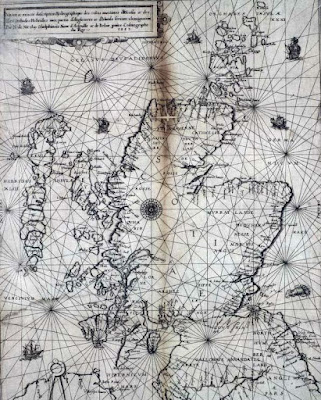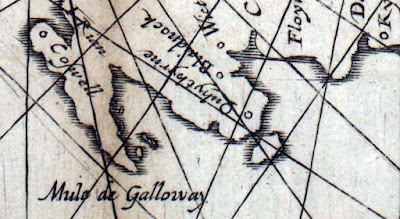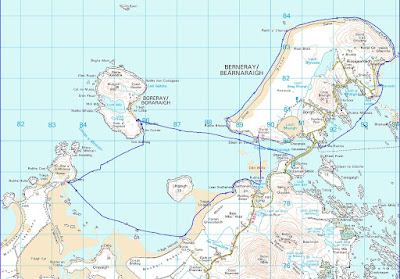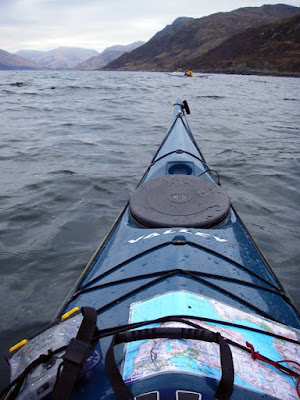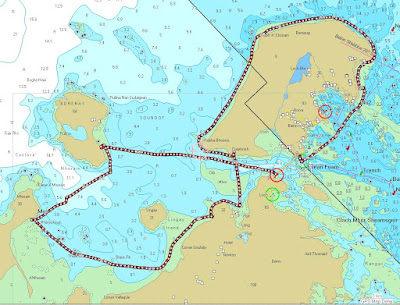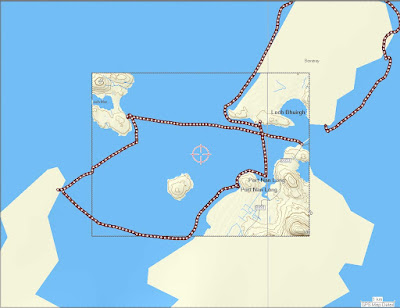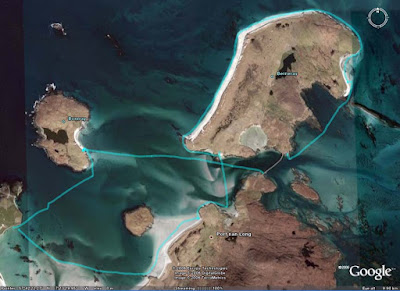 These boots are made for kayaking, and that's just what they'll do
These boots are made for kayaking, and that's just what they'll do
Are you ready boots? Start kayakin'!with apology to -"These boots are made for walking", Nancy Sinatra
This is a test with a difference. These shoes and boots have been tested through 18 months to four years of Scottish sea kayaking conditions. The idea for this test came to me at the 2005 Skye Sea Kayaking Symposium. The variety of footwear was incredible, from the flimsiest of flip flops to the most heavy duty divers’ boots and farmers’ Wellingtons! Generally sea kayakers can be divided into two sorts, those that like dry feet and those that don’t mind a bit of the wet stuff.
This test will consider the most suitable types footwear for wearing in summer with shorts, for wearing with trousers with ankle seals and finally for wearing with dry bottoms/suits with latex or Gore-Tex bootees. Carrying a loaded sea kayak is probably where sea kayakers are most likely to injure themselves so a grippy sole and some ankle support is just as important as keeping the wearers’ feet warm and sometimes dry. The test examines representative types of several different styles of footwear: yachting wellies, neoprene tight fitting knee boots, ankle boots (with and without zips), neoprene dinghy or windsurfing shoes, “wet” trainers and lastly “all terrain” sandals. It is in the nature of long-term tests that newer models have now replaced some of these. Although these have not been tested, inspection shows the changes to be largely cosmetic rather than of basic design, materials or construction. Although each brand might not be available throughout the sea kayaking world, there will probably be similar products available, after all, most seem to be manufactured in China. One way of looking at this review, is to ignore the brands and compare the type of shoes to see which might best suit your use and conditions.
Gill tall yacht boots £37.99.
Wellies of one sort or another are very popular with sea kayakers. These are made from natural rubber so do not dry them in the sun. They have removable insoles to aid drying and a calf tie to reduce water entry. They were very comfortable and remained dry if you could land in shallow water. They are lighter and closer fitting than most traditional Wellingtons. There was plenty room for size 10s in sea kayak cockpits and the heels were comfortable while paddling. As long as the calf ties were done up, the boots did not impede swimming or re-entry. This depends on how closely the boot fits your calf and they suited my bulky calves. Other manufacturers (such as Plastimo and Crewsaver) make boots with narrower uppers so it is worth shopping round to get a good close fit. The razor cut rubber soles were smooth but very sticky on most surfaces and, surprisingly, showed little signs of wear even after 3 seasons’ use, including lots of walks round camp to the nearest pub etc.. I was very happy with these until I had to land on the steeply shelving rocky east shores of the Uists and got wet feet in the deep water. Worn with dry bottoms/suits they do offer a lot of protection for latex bootees and are very easy to get on and off. They are not as warm as neoprene boots, but warm socks can either be used on their own or inside latex bootees. Overall they are very versatile. After three and a half seasons the rubber began to perish and leaks developed.
Chota Mukluks £65.00.

These are pretty unique. Up to the ankle they are like any neoprene ankle boot but the 3mm neoprene (which is super-stretchy, blind stitched and glued) extends up to just below the knee where a buckle and strap system tightens a smooth-skin lip to reduce water entry. The stitching remained completely waterproof. The soles are of moderate thickness and have a good grip but there is not a lot of foot and ankle support or protection on sharp and uneven ground. The heels are very comfortable when paddling. In warm conditions, wearing only shorts, these do keep your feet dry and launching is much easier than when using even tall cut Wellingtons. Only a drip or two gets in if a wave splashes over their tops. There is no problem with swimming but once you are back on land and if you are not wearing socks, your feet slip about a bit inside the boot. Dry suit users may not think they are necessary but they offer great protection for your bootees and in winter they are the warmest boots on test. They were very easy to get on and off. They are outstandingly comfortable and practical! After one and a half seasons there is no sign of wear.
Teva Omnium Pro £45.00.

These 3mm neoprene, zipper-less, ankle boots carry a great reputation among white water users. They are very close fitting and I bought one and a half sizes bigger than normal. They are the most difficult to get on and off. There is good ankle support as extra padding is sewn over where your ankle bones might press against the hull (more of use in a tight WW boat). The spider rubber sole is quite thin and carrying a heavily laden sea kayak over coarse shingle can hurt. The rubber grips wet and dry rock superbly but is lethal on wet, muddy grass, I took a very nasty fall launching at Port Appin in these. If you do not have dry bottoms your feet will get wet but they remain very warn and comfortable in all but the coldest conditions. They give good protection to latex bootees. You hardly notice them when swimming. These would particularly suit the larger footed paddler who is trying to squeeze into a small day boat. Apart from their grip on muddy grass, I can see why they are popular for WW use. Over a full season, they wore very well but early in their second season the neoprene tore along the line of stitches at the heel rubber.
Lomo Aqua Boot £21.00.

These boots were originally designed for diving but have proved to be particularly popular with sea kayakers. I could not believe the quality of these boots at this price. They are made of 5mm neoprene with a zip that (unlike some more expensive competitors) has a 3mm gusset behind. The zip makes putting the boots on and off much easier than zipper-less ankle boots. The gusset behind the zip stops sand and grit entering the boot and abrading your delicate, bare tootsies or your Gore-Tex or latex bootees. The boot was also high enough to protect the latter from the sun. The sole is thick and these boots are the most comfortable when carrying boats down sharp shingle beaches. There is also good foot and ankle support for uneven ground. The grip on wet rock is not quite so good as Teva Omnium Pro’s but is superior on grass and mud. The open cleats on the sole provide security on soft slippery surfaces but do not hold grit (which some other soles can carry into your boat). Overall these are excellent boots for carrying heavy boats up and down a variety of surfaces on shores and foreshores. These boots were very warm, even when we had to break the ice at the edge of a sea loch! Size for size they are a good bit bigger than some other boots. My size 10 feet and boots fitted in even small sea kayaks but I was squashed in my trusty old Dagger Redline. There were no problems swimming. After two seasons the only sign of wear was a metal puller breaking off one of the zips. A little loop of cord through the zipper soon had it working again. Even before taking price into consideration, these are the best all round boots of those I have tried. Not only that, they have now outlasted a pair of boots which were twice the price. The Lomo Aqua Boot is therefore a Best Buy

Climbing up to an old fort above a Hebridean beach. Sea kayaking footwear is not just for sitting comfortably!
Teva Gamma £49.99

These, trainer like, shoes are designed for use in the water. The uppers have mesh panels which let water in and out. There is a full lacing system, which gives great support to the foot but needs to be loosened right off if putting the shoe on over latex bootees in the winter. The insoles are removable for quick drying and overall these dried quickest of all the footwear on test. These shoes were best for carrying heavy boats. The soles gave the best overall grip on test and the cleats are wide enough not to trap grit and carry it into the boat. Mud does fill the cleats and then care needs to be taken. Like the Lomo boots, these were quite large on the feet and paddlers with big feet might find room is restricted in some smaller boats. In summer over bare feet these shoes were great, until you came across sand. The grains work their way into the shoe through the mesh and chafe your skin. Worn over bootees they do not offer the latex much protection from the sun and abrasion from sand was evident on its soft surface. In winter, even over latex bootees, they were cold compared with the neoprene boots. They did not impede swimming. Where these shoes really excelled was in coasteering! As such, they would be great to take along on camping trips for some rocky coastal exploration. After two seasons there was little sign of wear. They also make very good general purpose “trainers” for more general land based activity and would not look out of place in the local High Street. I have worn mine more often ashore than in the boat.

Coasteering in Jersey with Kevin Mansell.
Gill dinghy shoe £19.99.

These are made of 3mm neoprene with an elasticated insert on the top of the foot and are cut below the ankle (latest models are now cut slightly higher). The foot is well supported by a simple system of Velcro straps which is easy to adjust but there is no ankle support. This system prevents the foot moving about inside the shoe and gives a very comfortable firm fit for such a light shoe, particularly going down steep banks carrying a boat. They are very easy to get on and off. Although the sole is thin and has a very simple ribbed pattern, the shoes are remarkably grippy, especially so on wet grass compared with some of the other footwear. They were fine for carrying unladen boats on day trips but carrying loaded boats on sharp ground hurt. Using with bare feet in summer, they were very comfortable and gave enough warmth on the chillier days but they were too cold for winter use. Unfortunately, sand tended to get over the top causing the same problems as with the Teva Gammas. The higher cut 2006 model may be an improvement in this respect. None of the other boots caused problems when swimming but you can really SWIM in these shoes. I regularly swim off a rocky, barnacle covered shore and I found these highly suited to a pain free dip! After 3 seasons they are beginning to show signs of wear but are very good value.
Teva Terra Fi £59.99

These all terrain, water sandals certainly look the part but there is a large overlap all the way round the foot and I found I was not able to fit inside an Avocet wearing them. The sole is very rugged and heavy and the cleats tend to trap grit and mud. It gave very good grip on all surfaces except when attempting to climb steep rock! The foot beds of some other manufacturers’ wet sandals become slippery when wet but not on these Tevas. Your feet remain secure, wet or dry. The large straps give good foot support but it is still easy to knock your ankles if you are tempted into rougher ground by their AWD appearance. There is supposed to be a chemical treatment to stop the foot beds smelling after extended use with bare feet. It did not seem to work for me. Carrying heavy loads is easy, if the ground is flat but the go anywhere epithet met its nemesis on the steep boulder beaches of the Summer Isles. Fortunately, I had also brought a pair of hiking boots! These sandals are great in the summer on or (more likely) off the water but the straps take a long time to dry out. Sand does not seem to be a bother under the sole of the foot, as unlike the shoes, it escapes easily. However, sand trapped in the fibres of the straps is highly abrasive to feet and it makes sense to rinse them before walking any distance. Due to the weight and size of the soles, swimming is more awkward in these than in any of the other shoes and boots. They are expensive but I wore them nearly every day during the summer and there is little sign of wear after two seasons. They are not really suitable for wearing with dry bottoms with bootees.

Nemesis of the sandals, slippy round boulders in the Summer Isles.
Conclusions.No wonder kayakers wear such a variety of types of footwear; each has advantages and disadvantages. Each type tested here has been a good buy but I have ended up using some more often for non-kayaking activities. However, this is a sign of versatility; I could not imagine nipping to the shops in the Mukluks but have done so in the Gill yacht boots, Teva Gammas and Terra Fis! Two boots stand out for touring use in Scottish conditions. First is the incredible value and all round performance of the Lomo Aqua Boot. At the other end of the price range, the year round comfort, practicality and warmth of the Chota Mukluk is also outstanding. Finally, what sort of sea kayaker am I? Well, I like dry feet!


